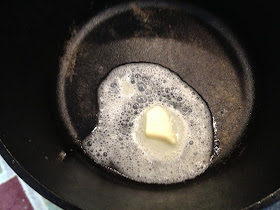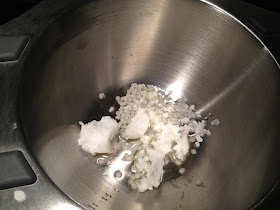Usually there are so many things to tend to in the garden this time of year. But it has been so cool and rainy everything is sluggish. And it snowed through the first week of May which significantly delayed planting our warm weather crops. But everything is in the garden now.
The plants all look healthy if not a little small for the time of year. However a few stalwarts refuse to be daunted by the weather. Among them the chives.
My chives started with one little plant in a two inch pot I brought home as an impulse purchase. Now, some fourteen clumps later lining my lower garden bed, and countless plants given away, I can honestly declare my chives are thriving.
 |
| Chive Buds Ready To Pop |
I love so many things about chives; their happy waving green stalks, the strong aroma when trimmed for cooking, the light onion taste they bring to raw vegetable dishes, and probably my favorite their beautiful flower. Being part of the allium family, chives bear the telltale "globe of many flowers" bloom ranging from pink to purple to blue.
 |
| Love This Color |
I must admit that I love all alliums. We have a bed of ornamental alliums that are grown for their amazing blooms. We always grow three or four types of garlic, enough for a whole year of cooking plus some for next falls' seed garlic.
And then there are the onions that I can't seem to do without.
One of my favorite projects is making chive vinegar. For this project you will need:
A dry sterilized jar with lid (one quart mason jars work well)
3 - 3 1/2 cups white wine or rice vinegar
1 cup or more chive blossoms
Pick the chive blossoms in the morning after the dew has dried but before the heat of the day has caused their essential oils to evaporate.
Gently swish the blossoms in cold water until free of debris.
 |
| Getting a Cool Rinse |
Allow blossoms to dry; you can let them air dry or use a salad spinner.
 |
| Drying on a Towel |
Pack the blossoms into the sterilized jar then fill the jar with your choice of vinegar.
 |
| Fill the Jar |
I prefer to use a good white wine vinegar or a rice wine vinegar. Remember the better the vinegar the better the end product. Don't use apple cider vinegar because the darker color of the vinegar will mask the beautiful pink the chive blossoms produce. Also apple cider vinegar has its own very strong flavor that overpowers the more delicate chive flavor.
Close the jar and let set for 4 - 6 weeks in a dark place. Shake the vinegar in the jar every couple of days during this time. Once the vinegar is to your liking you can choose to leave the blossoms in or strain them out. The best choice is to strain out the old blossoms then add a few new blossoms to the finished product. However, given the time frame in which chives bloom, fresh blossoms may not be available.
 |
| After 6 days. Don't you love the color! |
Note, if you have a metal lid for your jar, the vinegar may react with the lid making a mess and generally unusable product (don't ask me how I know). Put a layer of plastic wrap between the jar opening and the lid to prevent the vinegar and metal lid from reacting. Also label and date your jar. It is very easy to forget what you made and when you made it after several weeks (again, don't ask me how I know).
There are many other herbal vinegar worth having as well. These all make great salad dressings, vegetable and/or meat marinades, additions to soups (especially when a soup just needs something), or a great sprinkle over bruschetta.
Try basil and garlic in white wine vinegar, or dill, chive and peppercorn in red wine vinegar. The basic recipe is the same, just the herbs have been changed to protect the innocent, I mean to add some variety to your pantry.
Don't forget to follow me on
Facebook and
Pinterest.
Shared with:
Homestead Barn Hop; More the Merrier Monday; Clever Chicks Blog Hop; Tuesdays with a Twist; Down Home Blog Hop; Wildcrafting Wednesday; Home and Garden Thursday; From the Farm Bloghop; Freedom Fridays; Thursdays at the Homestead










































